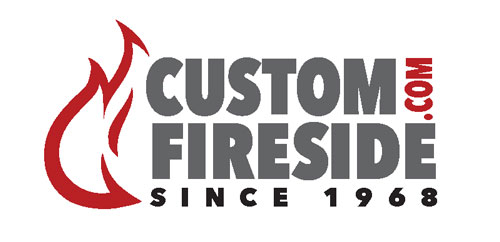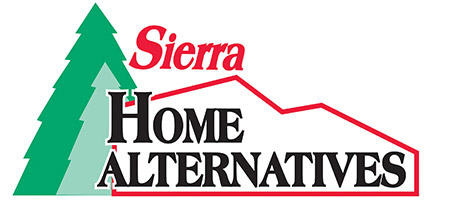As the memories of summer events and vacations begin to fade, now is a great time to prepare for the colder weather that’s right around the corner.
Following a fall home maintenance checklist and using these home maintenance tips will make the seasonal transition easier. It’s much simpler to complete many of these tasks during moderate weather conditions. Taking proactive steps now will save you money, preserve or increase your home value, and keep you and your loved ones more comfortable through the chillier weather that’s ahead. Mother Nature doesn’t procrastinate. Neither should you!
ORGANIZING AND PLANNING FOR FALL MAINTENANCE AND CLEANING
Whether you’re organizing and rearranging, or cleaning the garage or house, this fall maintenance work is time well spent. As we head into the colder months, well-organized living areas, garage space, and a yard that’s been prepared for winter ensures less stress and frustration. Below are tips to get your home – inside and out – ready for cold weather.
1. INSPECT AND CLEAN THE GUTTERS AND DOWNSPOUTS
These play a crucial role in keeping water away from your home’s foundation. In the fall, leaves and small twigs can quickly clog your gutters, reducing their effectiveness.
- Thoroughly clean out the gutters and downspouts to prevent water and ice damage.
- Install gutter guards if there are trees close to the house.
- Ensure that downspouts are extended to discharge water at least at least six to eight feet from the foundation.
2. INSPECT YOUR ROOF FOR:
- Damaged or missing shingles. Both will eventually lead to leaks.
- Any damage to the flashing around vent pipes and the chimney.
- If you are in doubt or unsure of what to look for, contact a reputable roofing company.
3. CLEAN WINDOWS AND IF NECESSARY, INSTALL STORM WINDOWS
- No one will argue that there’s nothing like a clean window, both inside and out! Your disposition will be better with clean glass!
- If you use storm windows, install them now.
- If you have older windows, add plastic film insulation to help reduce heat loss.
4. SEAL CRACKS AND GAPS
Heating your home is expensive. Cold air will find its way into your home through even the smallest cracks. Sealing cracks will increase your comfort and lighten the load on your heating bills.
- Carefully inspect all windows and doors for drafts. Add weatherstrip or caulk as needed.
- Don’t forget places such as around pipes, vents, wires, attic hatches and the refrigerant line for your central air conditioning condensing unit.
- Any gaps or cracks in the foundation wall or house siding should also be sealed.
5. SERVICE YOUR HEATING SYSTEM
Fall is a great time to ensure that your furnace, heat pump, or boiler system is in good working order. The last thing you want is to discover that your heater doesn’t work during the first cold spell of the season, only to find that and service contractors are booked a week in advance.
@welovefire Fall is here and it’s time to prep your house for winter. Check out our new blog for simple tips to keep your home cozy all season long! #hvac #fallcleaning ♬ original sound – We Love Fire
- Schedule a local professional HVAC contractor for an annual check. Some offer discounts for scheduling in late summer or early fall, to take some pressure off their workload once it gets colder.
- Be sure to replace the furnace filter.
- Consider hiring a professional to clean the ductwork and air vents to allow for optimal airflow and efficiency.
- Think about installing a programmable thermostat to lower the temperature automatically when you’re away.
- You might consider a home warranty that provides coverage for unexpected repairs, including those related to winter weather.
- If you have a wood burning fireplace, stove, or insert, call a certified chimney cleaning company to inspect and clean your chimney system. Fire safety codes recommend having this done once a year. And remember to make sure the wood you’re planning on using this year has been cut, split, stacked, covered and left to dry for at least a year. You get more heat and less creosote with dry, seasoned fuel.
The home maintenance tips above help ensure your heating system, roof, and insulation are ready before temperatures drop.
6. INSPECT SMOKE AND CARBON MONOXIDE (CO) ALARMS
With your house closed up and your heating system running, wintertime can increase the risk of CO poisoning and house fires.
- Test all alarms once a month.
- Mark your calendar or put a note in your phone to replace the batteries in all alarms every 6 – 8 months, even if they’re not dead.
- Make sure you have a working smoke/CO detector on every level of your home, especially near the bedrooms.
7. PLUMBING CONSIDERATIONS
Nightmares are often the result of frozen water pipes. Frozen and/or broken pipes are one of the most damaging and expensive issues a homeowner can face.
- Insulate all exposed pipes, especially those in basements, garages, and attic areas. Consider electric heat tape in severe cases.
- If you don’t have them, install frost-proof hose bibs and shut off the water supply to any exterior spigots if possible.
- Drain the water from the garden hose.
8. CHECK INSULATION LEVELS
Everyone knows that insulation keeps your home more comfortable and saves money on heating (and air-conditioning) costs.
- Check the attic for sufficient insulation levels. You should not be able to see any ceiling joists or the bottom chord of a rafter. If you do, more insulation is needed.
- Add insulation to pipes and ductwork in unheated areas.
- If you don’t have one, give some thought to installing an insulated garage door(s).
- Consider hiring a contractor to help evaluate insulation needs in your home. Also, check with your public utility. Many companies offer programs that help customers identify deficiencies in home insulation levels.
9. CHECK THE SUMP PUMP
I have a phobia of flooded basements. Water in a basement can lead to several problems. So, if your basement has a sump pump, it’s easy to test it to make sure it’s working. Simply pour enough water into the pit to raise the float high enough so the pump cycles on and off.
- If it sounds weird or doesn’t appear to be working, call a plumber for service. You definitely want to find out that it’s not operating sooner rather than later!
- Clean the pump and remove any debris in the sump.
10. PREPARE YOUR LAWN, INCLUDING THE LANDSCAPING
Doing a few chores now sets the wheels in motion for a healthier yard in springtime.
- Keep leaves and pine needles raked up to prevent them from smothering the grass.
- Apply a fall fertilizer to help strengthen the grass before it goes dormant for the winter.
- Prune shrubs and trees and remove any dead or unwanted limbs.
- Mark driveways, sidewalks and garden beds with fiberglass stakes to guide snow removal.
- Consider aerating the lawn to improve nutrient absorption and root growth.
11. CLEAN, SHARPEN AND STORE LAWN EQUIPMENT
Once your lawn is pretty well set, it’s time to shift your attention from gardening and yard work to preparing for the winter.
- Clean and change the oil in your lawn mower, trimmer, and other gas-powered tools.
- Now is a good time to sharpen and clean up lawn mower blades, shovels, hoes and other gardening tools so they’re ready to go next spring.
- Bring indoors or protect any delicate plants that cannot survive cold weather.
- The same goes for uncovered pots, which can crack in freezing weather.
12. DRAIN THE SPRINKLER SYSTEM
If you have an underground watering system, this is not an option. Failing to do so will result in water freezing in the pipes and costly repairs.
- Hire a pro to blow out the lines. If you have one, use an air compressor to do it if you’re experienced.
13. CHECK PORCH RAILING AND STEPS
Snow and ice can pose serious hazards for many, so be sure that handrails and steps are sturdy.
- Inspect and repair loose railings or steps that are uneven.
- Consider adding grip tape or non-slip mats to outdoor stairs.
14. CHECK EXTERIOR LIGHTING
Good outdoor lighting is very important, not only for safety but from a security standpoint too. This is especially true as the days get shorter and the nights get longer.
- Clean light fixtures and replace any burned-out bulbs.
- Consider adding motion-sensitive lights for your sidewalk, driveway, and porches.
- It should go without saying, but we’ll mention it anyway: keep all areas free of tripping hazards.
- Solar-powered lights might be a good option on south-facing walls.
15. PROTECTION FOR ENTRYWAYS
If your front door is frequently used and gets a lot of wear and tear, give some thought to the following.
- Add a durable mat both inside and outside to catch debris, snow, dirt, etc. Your living room will stay cleaner!
- How about a boot tray for wet shoes and snow boots?
- A reminder to check for any gaps around all four sides of the door to keep drafts and bugs out, and warm air in.
16. CHECK YOUR NECESSARY SUPPLY OF WINTER ITEMS
Don’t procrastinate until that first blast of snow comes or that first freezing rain of the season.
- NOW is the time to buy ice melt, replace your snow shovel, buy tubes of sand for traction or additional weight, and maybe checking your fuel supply for the snow blower. Hardware stores and big-box stores often have early sales on the essentials. Don’t wait until supplies are low or you can’t get out of your driveway because of the ice.
- Restock the emergency kit you keep in your vehicle. Flashlights and batteries, blankets, water and snacks should be replenished.
- If you burn wood, find a spot in the garage to keep a 3 or 4-day supply on hand. I’ve had a half dozen customers tell me they had to change their wood supply location because they couldn’t get to it due to large snowdrifts in the way.
With these steps completed, you’ll be well on your way to preparing your home for winter and avoiding unpleasant surprises once the snow starts falling.
17. REVERSING THE DIRECTION OF CEILING FANS
Some people think this simple trick helps with heat distribution. Personally, I prefer to leave the ceiling fan spinning clockwise year-round. I believe the key to effective heat (and cool air) distribution is to simply keep the air moving, and I keep my ceiling fans running in a clockwise direction year-round. Ceiling fans are a very effective way to do this, whether you have an 8-foot or a 20-foot high ceiling. Be sure to dust the motor housing and the blades of the fan, both top and bottom.
18. OTHER INDOOR PROJECTS INCLUDE:
Vacuum cleaner: Empty canisters, clean attachments, replace filters, clean rollers, inspect the exhaust system, check for a frayed or damaged power cord, and test battery health on cordless models.
Light fixtures: Inspect ceiling fixtures and lamps for burned-out light bulbs and replace them with energy-efficient options.
Thoroughly clean:
- Kitchen: Clean appliances inside and out, scrub countertops, organize your pantry, and discard outdated and expired items. Don’t forget to move your fridge and stove away from the wall and clean behind and underneath them.
- Bathrooms: Scrub tiles, sanitize fixtures, and either wash or replace old shower curtains and liners.
- Bedrooms: Wash all bedding, vacuum under the bed and rotate your mattress for even wear.
- Living Areas: Dust furniture, give the carpet a thorough vacuum, and then shampoo it. Wipe down the walls and baseboards, especially the corners.
Consider adding new indoor plants to help add color to the room and brighten your space.
WRAP-UP: GET WINTER-READY WITHOUT THE STRESS
Getting your house and yard ready for fall and winter doesn’t have to be overwhelming. A little planning and maintenance now can help you avoid costly repairs, reduce energy bills, and keep your home and loved ones safe and cozy throughout the season. Use this simple fall home maintenance checklist as a guide to tackle a few tasks each weekend, and you’ll have your home winter-ready in no time.
I’m a big fan of child labor. So, if you have kids, get them involved. Start when they’re young and they’re more apt to pitch in and help when they get a bit older. There’s nothing wrong with getting some help with raking, yard work, and cleaning windows. Odds are, the kids or grandkids will enjoy helping and they’ll take pride in the work they’ve accomplished. I know Sophie and Audrey Anne sure do!
It’s comforting to know that your home is well-prepared to face the elements. Pour yourself a warm cup of cider, grab your checklist and start planning to get your home and lawn ready to embrace the beauty and challenges of fall and winter.











